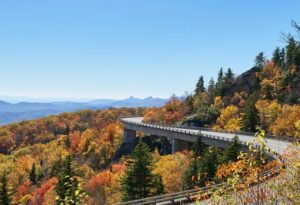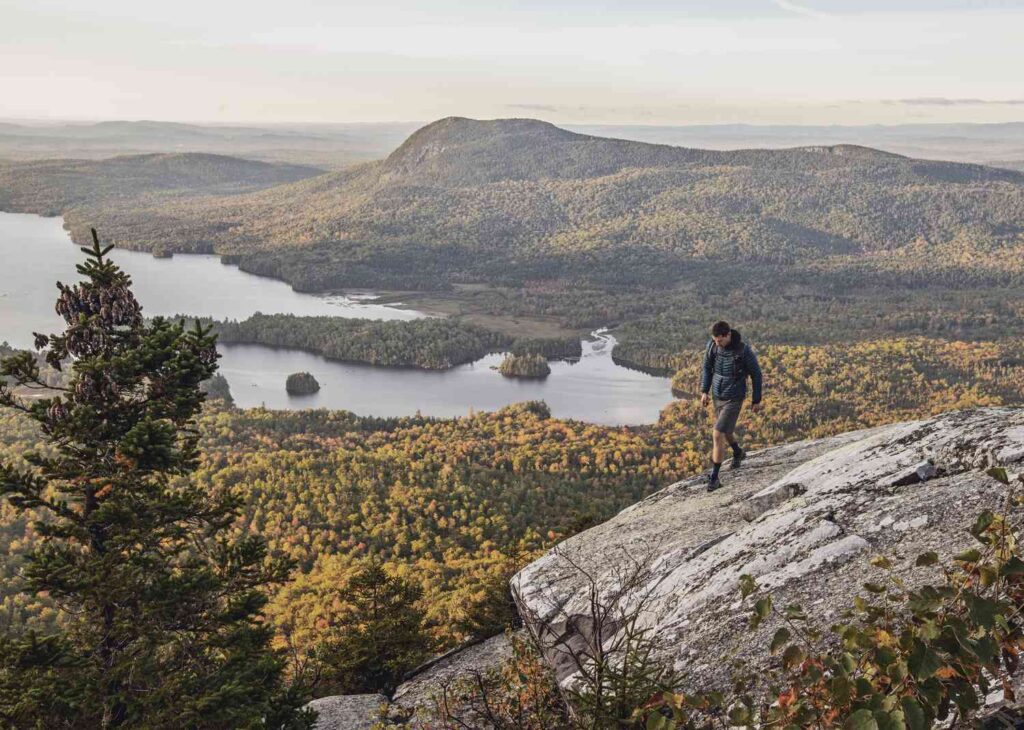
The Appalachian Trail winds over 2,000 miles along the crests and valleys of the Appalachian Mountains. This article will uncover captivating facts about the trail that remain unknown to most hikers. Expect a revealing look at the majestic Appalachian Trail, from stunning vistas to the trail’s formation. We’ll also explore the trail’s rich history, unique wildlife, and the determined hikers who take on its imposing length each year. The secrets of this renowned hiking path unfold here through intriguing facts and figures about everything from geology to thru-hiking records. The Appalachian Trail holds wonders around every bend.
25 Facts About The Appalachian Trail:
- The Appalachian Trail is approximately 2,190 miles long. It changes from year to year with trail rerouting, long-term closures of segments, etc.
- It passes through 14 states along the crests and valleys of the Appalachian Mountain range.
- The trail has over 250 shelters for hikers to rest.
- The Appalachian Trail Conservancy was formed in 1925 to help complete and take care of the trail.
- The highest elevation on the trail is Clingmans Dome at 6,643 feet.
- It takes thru-hikers around 5 to 7 months to complete the entire trail.
- The first person to thru-hike the Appalachian Trail solo was Earl Shaffer in 1948.
- The fastest known time for completing the trail is 45 days, 22 hours, and 38 minutes.
- Approximately 3 million people visit at least part of the trail every year.
- The black bear, white-tailed deer, and rattlesnake can be found along the trail.
- Over 600 miles of the trail goes through national parks.
- The Appalachian Trail runs through the Great Smoky Mountains, the longest national park in the eastern U.S.
- “Trail magic” is when hikers experience unexpected acts of kindness from strangers.
- Only about 25% of thru-hikers who attempt to complete the full trail make it all the way.
- The Appalachian Trail Conservancy estimates over 15,000 people have hiked the entire trail since it opened.
- The trail goes over many historic landmarks like the Delaware Water Gap and the Cumberland Gap.
- “Trail names” are aliases hikers give each other along the journey.
- “Flip-flopping” refers to hiking the trail in non-continuous sections over multiple years.
- Lyme disease, giardia, and norovirus are health hazards faced by hikers.
- Hiking poles, water filters, and lightweight tents are essential gear for a thru-hike.
- Trail towns offer hikers opportunities to resupply, shower, eat, and rest.
- The Appalachian Trail passes through 6 national forests.
- Occasional flooding, storms, and rough terrain make hiking challenging at times.
- A voluntary register system allows hikers to log their progress along the trail.
- Ed Garvey designed the system of white blazes to mark the trail in the 1930s.
Origins and History of the Appalachian Trail
Let’s get into the origins and more for The Appalachian Trail, as we know it today.
The brainchild of Benton MacKaye
The infamous AT was actually born from the imagination of one solitary man, Benton MacKaye. A conservationist, forester, and regional planner, MacKaye envisioned the idea of a super trail stretching over numerous states in response to the increasing industrialization of America. His proposal in 1921, shortly after his wife’s death, was in part an attempt to create a refuge from the busyness and stress of city life. Little did he know that his idea would become one of the world’s most famous hiking paths.
Construction of the trail
MacKaye’s idea was met with enthusiasm, and he was able to gather a group of volunteers to begin the development of the trail. The process was a feat of endurance that demanded the commitment and collaboration of countless volunteers. The Appalachian Trail was officially completed in 1937, after more than a decade of dedicated work.
Role during the Great Depression
Throughout the Great Depression, the Appalachian Trail played an important role as a source of jobs, as the government resorted to public works projects to alleviate unemployment. Thus, the trail was both a boon to the economy and a beacon of hope during trying times.
The trail today
Today, the Appalachian Trail stretches over 2,000 miles and spans 14 states, from Georgia to Maine. It is hailed as a testament to the spirit of conservation, and witnesses hundreds of thousands of hikers every year.
Geography of the Appalachian Trail
One of the most remarkable aspects of the Appalachian Trail is its diverse geography.
The trail’s stretch across 14 states
Facing a variety of climates and landscapes, starting from Springer Mountain, Georgia all the way to Mount Katahdin, Maine, makes every section of the journey a unique experience.
The highest and lowest points
The highest point on the trail is Clingmans Dome in Tennessee, standing at an impressive elevation of 6,643 feet, while the lowest point is the Bear Mountain State Park in New York, which sits at a modest 124 feet.
Unique geographical features along the trail
The Appalachian Trail boasts a wealth of unique geographical features, including vast wilderness, dense forests, crystal-clear streams and expansive mountain ranges. These all contribute to making each step of the hike a constantly evolving adventure.
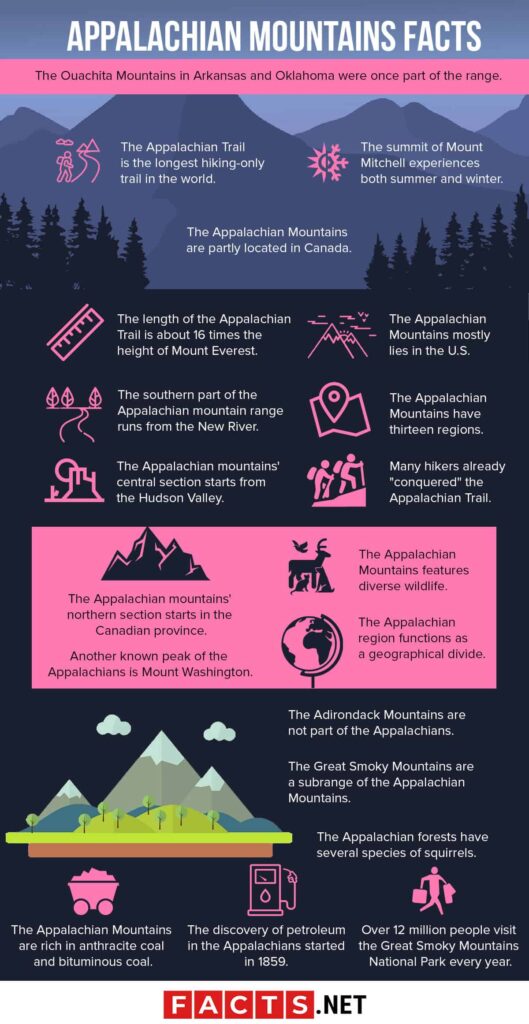
Flora and Fauna on the trail
As one of North America’s most biodiverse paths, the Appalachian Trail houses a remarkable array of flora and fauna.
Variety of plant species
The trail is a virtual botanic garden, showcasing a diverse range of plant species from the rhododendrons of North Carolina to the maple and birch forests in the Northern states.
Wildlife encounters
Wildlife encounters are common on the trail, with an array of fauna from black bears and deer, to smaller critters like squirrels, chipmunks and a variety of bird species.
Endangered species found on the trail
The trail is also home to several endangered species, such as the Indiana bat and the bald eagle, lending more weight to its vital role in conservation.
Trail towns and communities
One of the most enriching aspects of hiking the Appalachian Trail is the interaction with small towns and their communities along the way.
Small towns along the trail
Whether it’s Hot Springs in North Carolina or Harpers Ferry in West Virginia, each of these small towns offers a unique slice of Appalachian culture and history.
Support from local communities
These local communities provide immense support to hikers, offering everything from food and lodging to camaraderie and encouragement.
Interaction between hikers and locals
Some of these communities have become integral to the trail experience, with locals offering ‘trail magic’—unexpected acts of kindness—such as handouts of food or drinks to hikers.
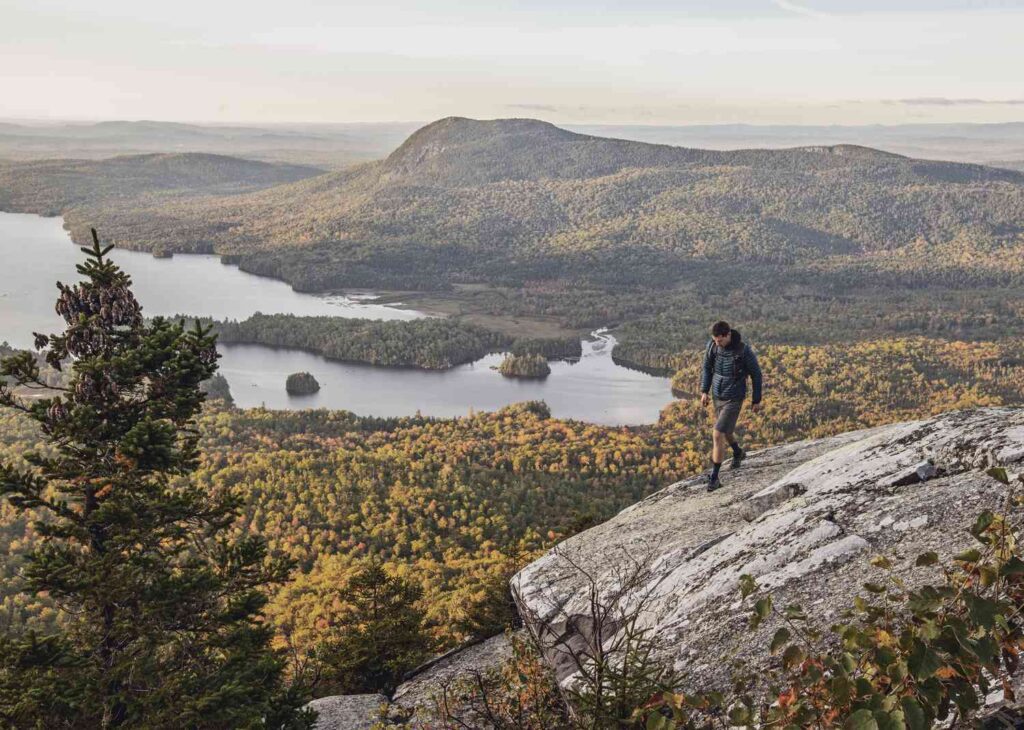
Well-known sections and landmarks
There are several well-known sections and landmarks along the Appalachian Trail that offer breathtaking views and unique challenges.
The Smoky Mountains section
This section of the trail, one of the most scenic, passes through the Smoky Mountains, traversing the North Carolina-Tennessee border.
Katahdin Mountain in Maine
The trail’s northern terminus, Katahdin Mountain, in Maine, is a formidable final climb for northbound hikers.
Landmarks along the trail
Other distinctive landmarks along the trail include McAfee Knob in Virginia, with its panoramic views, and the iconic white blaze trail markers, guiding hikers throughout their journey.
Hiking the Appalachian trail
Hiking the Appalachian Trail is often seen as a microcosm of life’s journey itself, with its ups and downs, trials and triumphs.
Thru-hiking from Georgia to Maine
The most ambitious hikers opt for a “thru-hike,” trekking from the trail’s southern tip in Georgia to its northern end in Maine. This feat usually takes 5 to 7 months and requires significant preparation.
Seasonal changes on the trail
Seasonal changes play a significant role on the trail, from the vibrant colors of fall to the crisp, silent beauty of winter.
Challenges faced by hikers
Hikers face a host of challenges, from strenuous climbs and inclement weather, to the monotony and emotional exertion of the journey.
Trail etiquette and rules
Understanding and following trail etiquette and rules, such as staying on the trail and following leave-no-trace principles, ensures a positive experience for everyone.
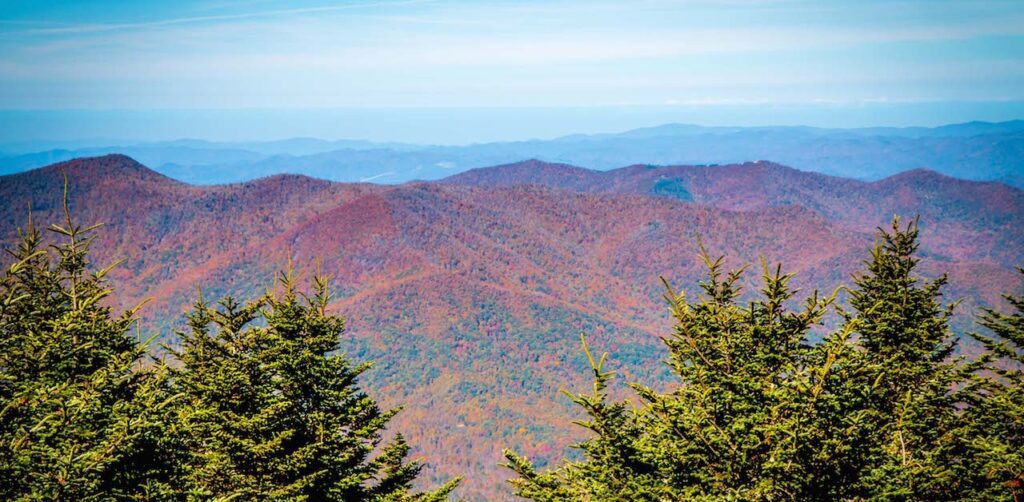
Record holders on the Appalachian Trail
Over the years, the trail has witnessed several record-breaking feats from hikers of all ages.
Fastest known times
These include fastest known times, such as that accomplished by professional ultrarunner Karl Meltzer, who completed the trail in just 45 days, 22 hours and 38 minutes.
Oldest and youngest hikers
The youngest person on record to hike the trail was just five years old, while the oldest known thru-hiker accomplished the feat at the age of 82.
Notable hikers
Notable hikers include Grandma Gatewood, who hiked the entire trail three times, starting her first trek at the age of 67.
Volunteers and Conservation efforts
The Appalachian Trail owes its existence to the tireless work of volunteers and their dedication to conservation.
Role of volunteer organizations
Volunteer organizations, such as the Appalachian Trail Conservancy, work diligently to preserve, manage, and advocate for the trail.
Trail maintenance
These individuals and groups help maintain the trail, ensuring it remains passable, safe, and preserved for future generations.
Conservation efforts
Beyond maintenance, they engage in active conservation efforts, from hosting educational programs to collaborating with local communities to protect the trail’s surroundings.

Physical and mental effects of hiking the trail
Undertaking the Appalachian Trail adventure has profound physical and mental impacts on hikers.
Physical challenges and injuries
Physical challenges range from daily aches and sores to more serious injuries. Hikers need to be in good shape and prepared for these exigencies.
Mental ordeal
The sustained solitude, monotony, and exertion can also result in a considerable mental ordeal, but eventually leads to self-discovery and profound personal growth.
Personal growth and spiritual experiences
Many hikers thus report a deepened connection with nature, personal insights, and even spiritual experiences while on the trail.
The Appalachian trail in pop culture
The Appalachian Trail has left an indelible mark on popular culture, inspiring a surge of books, movies, and artwork.
Representation in books and movies
There are countless books written about the trail, perhaps the most famous being “A Walk in the Woods” by Bill Bryson. The Trail has also been featured in various movies and documentaries, including a film adaptation of Bryson’s book.
Famous quotes about the trail
The trail has inspired numerous famous quotes, such as “It’s not about the destination, it’s about the journey”, expressing the beauty and transformative potential of the hike.
How the trail has inspired artists and writers
Beyond writers and filmmakers, the trail has been a muse for artists, musicians and photographers, providing a stunning backdrop that encapsulates the beauty and unflinching spirit of the natural world.

